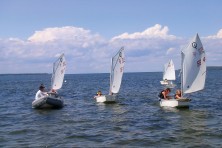Gibraltar Sets Example for Dyslexia Training
- Share
- Tweet
- Pin
- Share

by Donna Hejtmanek, Legislative Chair, International Dyslexia Association, Wisconsin Branch
During the last legislative session, Decoding Dyslexia and the International Dyslexia Association, Wisconsin Branch (IDA-WI) wrote nine bills around dyslexia, but sadly, only one became law: Act 86. This law allows for the development of a guidebook related to dyslexia and related conditions.
Act 86 states that the guidebook will contain the definition of dyslexia, which is a specific learning disability that is neurobiological in origin.
Dyslexia is characterized by difficulties with accurate and fluent word recognition and by poor spelling and decoding abilities. These difficulties result from a deficiency in the phonological component of language that is often unexpected in relation to other cognitive abilities and the provision of effective classroom instruction.
Secondary consequences may include problems in reading comprehension and reduced reading experience, which can impede growth of vocabulary and background knowledge. Unfortunately, the guidebook is published for informational purposes only.
In my experience as an educator for 41 years in special education and as a reading specialist, I’ve observed that the term “dyslexia” is not used in Wisconsin schools. Teachers and administrators never use the term, in spite of the 2015 federal guiding document that includes dyslexia as an alternative term for learning disabilities (LD). There are eight areas of learning disabilities, three of which may be characteristics of dyslexia (basic reading, comprehension and fluency).
Why does dyslexia continue to be a mystery? Many, if not most, Wisconsin schools of higher education do not use the term “dyslexia” in their teacher-preparation programs. Teachers are not taught how to identify or remediate this disability. The result is that 20 percent of students who struggle with word identification do not receive proper intervention.
Patricia Mathes of the Peabody College for Teachers at Vanderbilt University refers to this as “dysteachia.” Dyslexic characteristics in children can be prevented with the proper identification and intervention during the early grades.
In October 2019, IDA-WI did a dyslexia simulation and awareness presentation to the Gibraltar School District. This past summer, the district chose to train all of its teachers using Orton-Gillingham, a structured literacy approach that is explicit, sequential, systematic and multisensory.
Let the Gibraltar School District set an example that all Wisconsin schools can follow in choosing to train their teachers using science-based instructional methods to improve outcomes for all students. Our children are depending on us.
Donna Hejtmanek started a Facebook group called Science of Reading: What I Should Have Learned in College. Though the group is only 13 months young, it’s currently just shy of 50,000 members. “Teachers are thirsty for this knowledge, and the schools of education are not giving it to them,” Hejtmanek said.



